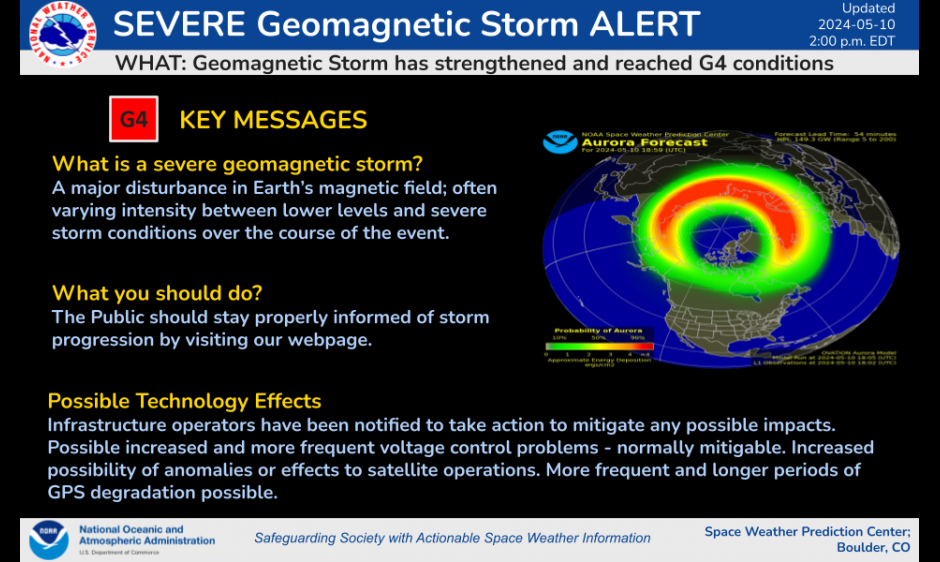DENVER — Coloradans may get a glimpse of the northern lights in the night sky Friday and this weekend during a rare, severe geomagnetic storm.
Fast facts:
- We're in what's called a G4, or severe, geomagnetic storm. It's the second-highest on the geomagnetic storm scale.
- It's the third G4 storm since 2019.
- The G4 watch issued ahead of the storm was the first since 2005.
- If the clouds cooperate, the northern lights could be visible in Colorado Friday night and possible Saturday or Sunday night.
The Space Weather Prediction Center (SWPC) in Boulder on Friday said G4 geomagnetic storm conditions had officially been observed. It’s just the third severe storm in this solar cycle, which began in 2019.
While just the northeastern corner of Colorado was on the view line for Friday night’s aurora forecast as of midday Friday, the SWPC said the aurora has been visible from as far south as northern Alabama during G4 storms.
SWPC Service Coordinator Shawn Dahl told Denver7 meteorologist Steve Roldán the best time for viewing in Colorado will be late Friday evening into the early overnight hours after midnight – if the clouds cooperate.
“That's the prime time for us to be in the southernmost extent of wherever the auroral oval is materializing,” he said, adding that the waxing crescent moon will help by keeping the sky dark.
There is a chance the aurora could be visible again Saturday night or possibly even Sunday night, he said. The National Weather Service forecast for the Denver area, however, showed 78% cloud cover at midnight Saturday and 71% at midnight Sunday. Lighter cloud cover can be expected in the northeastern corner of the state, making for the best viewing out near Greely and Fort Morgan, according to Denver7 meteorologist Stacey Donaldson.
While a solar event like this brings the possibility of an aurora sighting across the U.S., it also brings some potential threats to technology and infrastructure. According to the National Oceanic and Atmospheric Administration, a G4 storm could have impacts on the power grid as well as satellite operations and GPS technology.
The SWPC says it is in contact with infrastructure operators ahead of a geomagnetic storm of this magnitude.
“By that I mean power grid operators, satellite controllers, communications with air traffic control that are talking to airplanes across the oceanic areas and more to make sure they're aware of what's going on and that they can mitigate the impact,” Dahl said. “So that's what our forecasters are doing behind the scenes here.”
The G4 geomagnetic storm watch issued ahead of this storm was the first issued by the SWPC since January of 2005.
Right now, we're in solar cycle 25, which is expected to peak later this year or early next year.
"So we could see activities similar to this all the way up into 2026," Dahl said.

The shutterbugs in our photography group on Facebook have captured some incredible images of the northern lights in Colorado. Check those out here.
Hear from the SWPC:
Coloradans may get a glimpse of the northern lights in the night sky Friday and this weekend during a rare, severe geomagnetic storm. Denver7 meteorologist Steve Roldán talked with Shawn Dahl from the Space Weather Prediction Center about the solar event. Watch the video for more.






